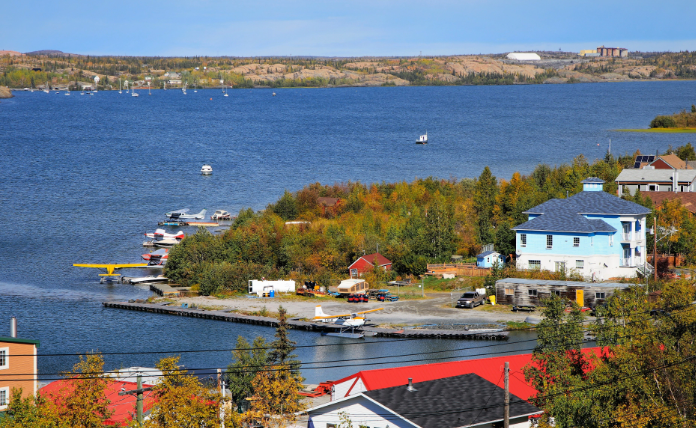Yellowknife: Gateway to the Northern Lights

Yellowknife is the capital city of Canada’s Northwest Territories (NWT) and is located on the northern shore of Great Slave Lake. The city is named after the indigenous Yellowknives Dene First Nation, who historically inhabited the area. Here’s a detailed look into Yellowknife:
Also Read:- Travel Guide Paraparaumu Weather Forecast and Observati
Geography and Climate: Yellowknife lies just below the Arctic Circle and is known for its subarctic climate. Winters are long and extremely cold, while summers are short and warm. Its geographical location also makes it a prime spot for viewing the Northern Lights, or Aurora Borealis, especially between November and April.
History: The area around Yellowknife has been inhabited for thousands of years by indigenous peoples. The establishment of the city as it’s known today began in the 1930s when gold was discovered in the region. This led to a gold rush, and subsequently, the town of Yellowknife was founded in 1936. It became the capital of the Northwest Territories in 1967, taking over from Fort Smith.
Economy: Initially, Yellowknife’s economy was driven by gold mining. Later, as gold resources dwindled, diamond mining took over as the dominant industry. Ekati Diamond Mine, which began production in 1998, was Canada’s first diamond mine. Other significant mines followed, bolstering the city’s economy.
Besides mining, other prominent sectors include public administration (given its status as the territorial capital) and tourism, especially for those seeking outdoor adventures or a glimpse of the Northern Lights.
Culture and Lifestyle: Yellowknife offers a blend of indigenous cultures and traditions of settlers who came in search of fortune. This melding has created a unique northern culture, which can be seen in the city’s festivals, art, and daily life.
The city is also a starting point for numerous outdoor activities, including fishing, hiking, and snowmobiling. The region’s lakes and vast wilderness areas are major attractions.
Population: As of the last census, Yellowknife’s population stands at around 20,000 residents. The city is the most populous community in the Northwest Territories and serves as a major administrative center for the region.
Infrastructure: Yellowknife is well-connected by road, air, and water. The Yellowknife Airport is a significant hub for the northern parts of Canada. Given the city’s remote location, connectivity is crucial for supplying goods and for travel purposes.
Conclusion: Yellowknife, often referred to as the “Diamond Capital of North America,” is not just a hub for mining but is a testament to the resilience and adaptability of those who choose to make their home in one of the most challenging climates on Earth. The city’s rich history, combined with its natural beauty and cultural vibrancy, make it a unique and intriguing part of Canada’s northern landscape.










